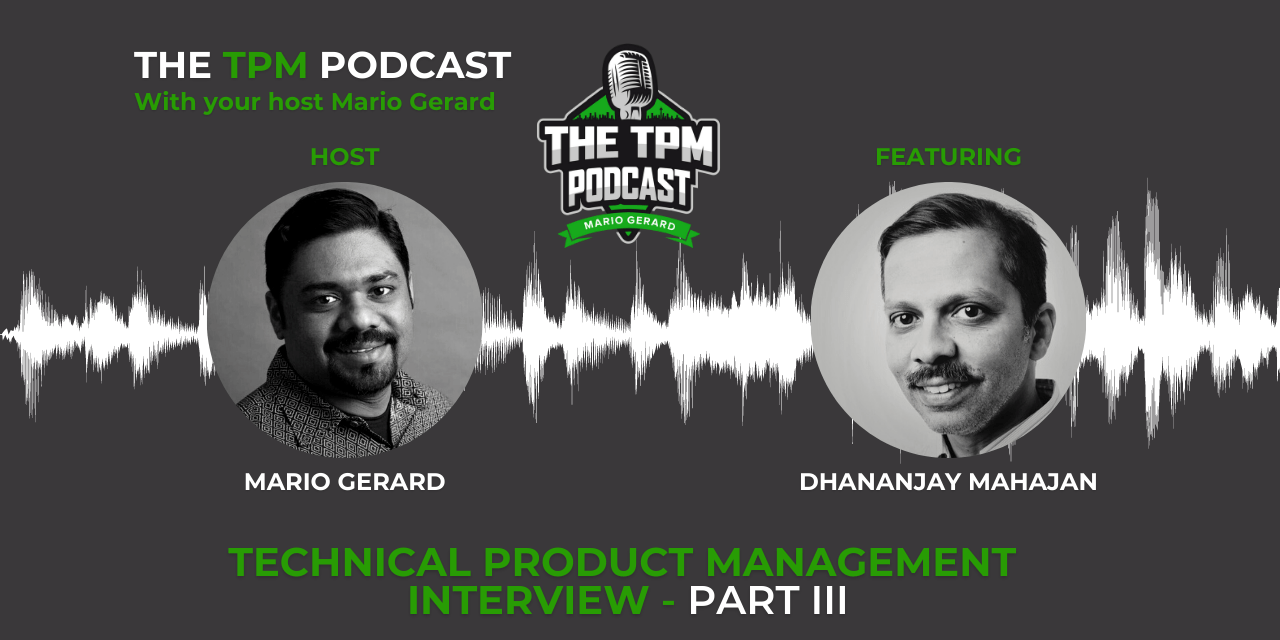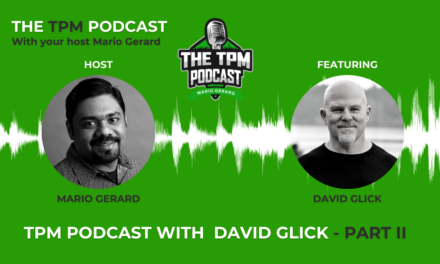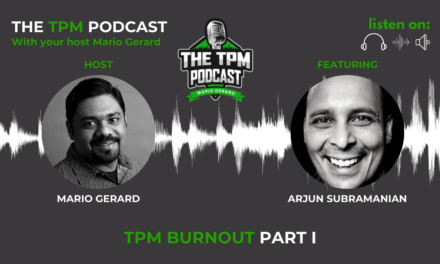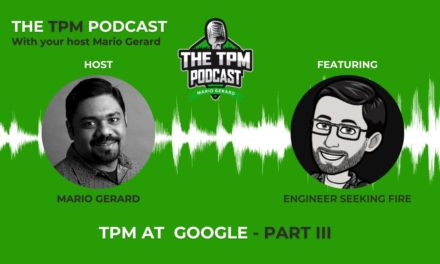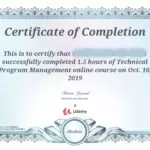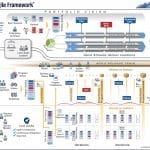Last updated on November 12th, 2022 at 12:19 pm
Podcast: Play in new window | Download | Embed
Listen in to a fantastic chat with Dhananjay Mahajan! He has over 25+ years of experience in working in tech. He has had a long career at Microsoft for 20 years. He worked as a lead engineer for 5 years and as a Program Manager 15 year. And over the last five years has been focused on program and product management areas. Technical Product Management Interview: With Dhananjay Mahajan
We discuss :-
- What is product management?
- How does Product Management differ In an agile vs a traditional organization?
- What the core fundamental skills a Product Manager should have?
- What does it take to be a product manager driving a technical product?
- How is it different being a B2C Product Manager vs a B2B product manager?
- What are the primary difficulties or challenges for most Product managers?
- How the Product management role is evolving in the near future?
- As a product manager, how do we look for product – market fit?
- How can you promote a culture of innovation?
- General Product Manager advice and tips ?
Dhananjay goes into great details and explains with great anecdotal stories. Feel free to add your comments below and also tell of other topics you might want to hear about.
Thank you,
How do you look for a product market fit?
Mario Gerard: Hi folks, welcome to the TPM podcast with your host Mario Gerard. This is the final part of the interview with Dhananjay, where we talk about product management do keep listening. So, the next question I have for you is how do you look for a product market fit?
Dhananjay Mahajan: Yeah, this is kind of similar to how we talked about minimum viable product. But even goes beyond.
What is the product market fit?
Mario Gerard: What is the product market fit? Let’s start with that.
Dhananjay Mahajan: In the industry product managers, talk this, talk about this a lot. A product market fit is basically for the product that you’re creating service that you’re creating. Does it have value enough that the market will pick and run with it.
Mario Gerard: And pay for it.
Dhananjay Mahajan: And pay for it. There have been products that were created in the past, like PDAs and Newtons and so on, which yeah. Were way ahead of its time and nobody caught onto it. And now look at how well…
Mario Gerard: That’s a very good example. I don’t know how many people know about the PDAs.
Dhananjay Mahajan: I have a few lying here. Which as a geek, I used to buy them? They never took off. HP had; compact had had one. And this never took off. Upon pilot, you know, the whole company went under, the product was out there, but the market fit was not there.
Mario Gerard: Or people didn’t see the creative marketing or whatever something was missing from the go to market strategy.
Dhananjay Mahajan: So, coming, that becomes really important to understand that are you creating a product that fits with the market. Now how do you determine what is a good product market fit. Goes back to the same rules we’ve talked about, understanding your customer. Are you working on something, a problem and providing enough value that the customer is willing to pay for it? Understanding in certain products that there is a different user persona and a different buyer persona and understanding both of their journeys is really, really key.
Mario Gerard: I think I wanted to add something to that, which is a word which I heard you use when you first started this discussion of how pervasive is this problem. One, how widespread is it that it actually needs somebody to come in and solve that problem for you? I think that’s really, you got to get that into your head and understand how big the space is and do probably some analyses of how pervasive that problem is. And the second thing which you mention was user personas.
I think a lot of people skipped that and I’ve actually seen products be more successful if they were actually defined with user personas. Which is why I think people at Amazon, the first thing they do is write the PR FAQ. Which is basically a press release. And the FAQ questions of what the product actually looks like. So, understanding what you user personas, I think a little bit earlier in the discussion, also, you said that there are three people who are using the products, there’s a person who’s making the decision to buy, the person who’s actually using the product, could be the end developer.
And then there are managers in the line, and they could be operational teams. They all have different personas. And understanding that key difference between each persona is so critical.
Dhananjay Mahajan: Absolutely. And also, a good balance of, I’ve seen in certain organizations they’ve gone where they have like literally 20 personas. And they’re so watered down or so targeted towards a specific thing that it becomes hard to figure out okay, which of the 20 ones are we talking about? And they’ll give them names. So, try to keep, what I’ve tried to do within my teams is keep between three and five personas. And really have those personas become more, as realistic as possible in terms of understanding what problems they face. What skills they can typically have and what is their interaction with your product going to look like?
And that really helps ground most of the prioritization discussions going forward. So, I think understanding that, and that could be through interview, through looking at other products, through looking at what’s out there in the market and sometimes something not out there in the market, but maybe understanding how those personas, once you understand how they do those things today. And how are you going to change their role, right. That becomes important.
If you look at Lyft or Uber as soon as you go to their website, they have, are you a rider or are you a driver? Clear distinction. And I did the wrong thing. So, they think I’m a driver. Sometimes I’ll get like promotions that drivers get. But it’s really important to have that in mind. Second one is the environment. Once you understand your personas and you’re providing you know, solution or targeting a solution to it, how will you, what’s the acquisition cost?
Mario Gerard: Acquisition of a customer.
Dhananjay Mahajan: Of that customer. What is the cost for the customer to get your product? Deploy it and manage and operate it. You know, pulling that together. Many, oftentimes we only look at, oh, this is going to cost X, right? But there might be downstream costs that are ongoing. Even for my mobile phone, I have to change batteries or now you, I can’t even change batteries. There’s an ongoing cost to keep it up and running.
Mario Gerard: Especially for enterprise products, I think I completely failed to understand that the cost of the product is not just the cost of the product, but the cost of actually implementing and utilizing that product effectively. Because you might sell something, but then it’s going to take them six months or three months to actually deploy that particular piece of software and actually start using them depending on how complex it is.
Dhananjay Mahajan: And you bring up a good point with enterprise products. There’s also liability involved. When we build, when I build cloud products, when we build on cloud products, you and I, we made sure that I can’t go into any customer’s privacy data and pull-out information. That’s a huge liability both for the cloud company that I am looking for as well as for the customer.
Mario Gerard: And the durability aspect. How reliable is your, scalable Is the service? Supposedly all cloud providers today, if your service is, does not meet the particular SLA, then they pay you back. There’s a cost for lost business. Because your end customer didn’t was not able to do something because the service is not available.
Dhananjay Mahajan: And that becomes very key because I’ve seen for some companies, some products not having that at the time of design has really impacted them in the long term. That cost of, you know, we had a security breach and then again, that’s where it comes as to what data are you collecting? How is the customer going to benefit from that data? How are you benefiting from the data? And are you making it explicit to the customer, how this data is going to be used? So, what is the data interaction model in addition to just the user interaction model is also important as you go along, what data do you gather. Many a times as you’ve seen these days, companies, large ones collected data, thinking there was no liability involved with it.
And now they’re sitting on this data, huge piles of data, and they’ve not figured out that this has large implications over you know, how it can be leveraged and misused. So, I think those are the things that are important to understand, not just in addition to thinking about what it makes in terms of the user and buyers journey possible, but also the data impact that you can have both on the user buyer, as well as the company and the customer and the environment that this product will be used in. Does it integrate well into the day-to-day environment that the customer is going to interact with?
If you get those three things, right. I think you’ll have a good, decent product market fit.
Mario Gerard: So, as a product manager, one of the main things you’re trying to do is you’re building new products. And how do you promote that culture of innovation and thinking beyond.
Dhananjay Mahajan: Yeah. As we build new products it is important to think outside the box. You’re building something that, you know, sometimes people have not foreseen the benefits of it. And have you not, if you start, I mean, that’s how we have cars today not faster carriages.
Mario Gerard: I was going to start our conversation originally with the Henry Ford example. He Very famously said, if I had asked people what they wanted, they would say they wanted foster carriages. And that’s a very interesting way of thinking of it.
Dhananjay Mahajan: Yeah. And so, it is important to have that culture of innovation when you work with your teams. Whether it’s your engineering teams, your sales teams, anyone who you interact with, and also for customers to show that you’re promoting that risk taking with proper controls in place. So, promote that risk taking take a few risks. You know, everything’s not going to be a perfect product market fit.
Sometimes you’ll try to take a square peg and try to fit it into a round hole. Just have controls to show you metrics, to show you that, oh, this is a round hole. I need to go back to the drawing board and come up with something with the round ping. Bring in diverse experiences. I truly believe that innovation happens when people bring in, as you said, Mario, their own experiences into it. You know, you have a different perspective having come from a, a sale as well as TPM background. And it’s when we have those healthy interactions, you have suggested things in the past, which I had not thought about. So, help that, it shouldn’t be my way or highway. I’m the product manager. I know customers just do this sometimes when I’ve explained, even to my engineering teams, the problems I’ve been surprised how they came up with a solution, which was far more elegant than what I had thought about.
And be pragmatic at the same time. Don’t try to build innovation for innovations sake. So, what I’ve called that as being pragmatic or being honest about the technology of building is this really innovation, because you want to do something innovative. And sometimes having that shiny object is good for products. As I have learned from one of my mentors in a product feature set, you know, 80% to 90% of features have to solve problems. And then you can leave 10 or 20% for shiny things to actually show the vision of where you are leading that product. So, build a few of those. But don’t go gang busters on just, oh, I’m going to build innovation. Nobody has ever done this. And then you end up with a product that nobody wants to buy. Because it’s bunch of you know bells and whistles that nobody cares about.
And then seek that cross of feedback from cost function. I’ve been surprised how many times my sales or even business development teams have given me some key feedback on what customer values would be. In fact, one of the situations was we were building a product for Kubernetes customers. And my sales team said, oh, customers are just, you know, in the early phases, they just need best practices, guidance. So, we built an opinionated guide. It was just a document, not even a Bunch of code and customers laughed it up. They’re like, wow, this is exactly what I need today. I need a guidebook on how I should deploy this. Not some tool that, you know, backs it up and automatically restores it. And has multiple regions automatically backed up with primary secondary. No, they just wanted like a simple rule book. Don’t do this, do this. This is bad. You’ll hurt yourself three months from now. That’s all they needed.
So, bring that, you know, use your relationships to understand and bring that culture of innovation.
How do you see product manager role?
Mario Gerard: That’s a very interesting way of you know, that’s comes down to how you know your customers at the end of the day. That’s a very core folk, this point of the whole product management role itself. How do you see this role now evolving, the product manager role? I think you know; it came about with the agile whole agile framework. And we’ve spoken about the different hats the product manager has to wear, but how do you see this role, like changing in the future?
Dhananjay Mahajan: Absolutely. And this is our viewpoint. There might be others as well, but we have seen, you know, the outbound, inbound and program manages kind of program management meld into product management. I see as you pointed out, what, as an example, what AWS is doing, right? Product management, technical, but also as a business owner and an entrepreneur. Somebody who is not only responsible for the experience, understanding customer problems, being very in depth, have an understanding of customers, their life cycle of using the product, but also understand the market and technology and how they correlate together. I think that’s a key aspect of how this…
Mario Gerard: I think that comes back to the single credit owner model as well. You have One person who is both business owner and the entrepreneur, and who’s kind of, and I see large organizations, even like Amazon and other organizations like doing this, even at Oracle, right? At Oracle cloud infrastructure at our team, they’re owners, which we’ve assigned who going and going to go and solve a particular problem. So, I think that’s how the role is evolving. You could give that person a title of a CEO or that particular product. You could give that person a dev manager, he might be just doing a developer’s job, managing his developers, but he’s responsible for the whole thing. Or you could give him a product manager title, titles aside, you see that kind of amalgamation of that particular role to do greater things.
Dhananjay Mahajan: Exactly. And the product themselves are evolving into being more solution and services focused. In the past I used to have a whole lot, I still do because I like all my media on a server and the pro was basically a media server in the house. But now everybody uses, you know, the various streaming services to listen to music and consume their media. And they’re a podcast like the one you’re doing. So, the whole thing is an ongoing service. And if my service is down, I can’t consume my media. It’s a whole SAS that’s coming in and product managers, how to be more familiar with the SAS experience than they have in the past. And it has become more solutions focused rather than feature focused. What is the problem that you’re doing? And as we talked about earlier, it’s more agile than a water flow or a waterfall model. It’s more disruptive. So, you’ve got to make sure that in a disruptive market, you know, customers have a shorter attention span on any new thing that they get. You’ve got to keep the customer captive and continue to deliver continuous value to the customer. Otherwise, you know, they’ll move on.
Mario Gerard: Yeah. I think the role is evolving as the products are evolving. I also believe that agile is all about iterative and iterating on the product. But the role itself is also, I think, going through its own like evolution, right. Use of product managers were at some point they were business analysts and then they became product managers. They owned something really small and tiny. And now you see product managers like own much larger pieces of the puzzle. And then as you said, right, they were going to probably own more solutions and not just small features. Yeah. It’s a more solution centric view. So, I think the product manager himself, or the role itself just like how TPMS are evolving the role itself is going to evolve. And that brings me to my final question. What are your general tips and advice for product managers?
Dhananjay Mahajan: Yeah. So, these are through the long and hard years of working as a program manager and then product manager and coming from an engineering background, one i don’t ever take for granted that you have the respect of the people you’re working with especially the engineering team. You have to earn your respect and you can’t just walk into a room and say, I’m, you know, product manager who has worked on this for 20 years and, you know, have been in the industry, so you better listen to me, nobody’s going to listen to you for that.
Secondly, as you and I talked about we have a large dependency in our vision becoming a reality on teams who don’t even report into us. Yeah. So, we have literally no control other than showing them a compelling vision. And so, it is important for us to, to understand, be a listener and do favors. The more favors you do; we are in a unique position where we are the glue between different teams. Yeah. So, we are often connected. And so, when an engineering person comes in and say, oh, I have this problem. I don’t know whether I should do A or B. Okay. Let’s talk to a customer. Help him out. And show him, show him or her both options as a customer and have them understand what the real customer problem is. If the sales team can’t understand a particular technical de detail, help them out, I think doing those favors will go a long way. Because then those will multiply and help you back.
Advice and Tips
Mario Gerard: I see people who are extremely successful have that empathy. Not only the customers general sense of empathy. Yeah. That I want to help. I have people I know that extreme empathy takes you, gives you a much better run rate and much better. Eventually your goal is going to be achieved whatever that goal might be. If you have a lot of empathy to your customers. And that kind of ties back into your earliest statement of earning respect, right? How do you earn respect here with your developers is if you have that empathy that I’m here to help, that really goes a long way? What are some other advice and tips?
Dhananjay Mahajan: And then another one is take calculated risk. You have the power that you earned, but also the responsibility, make sure that you’re taking those calculated risks, making everyone aware what the pros and cons of the risk are. Yeah. And then having checks and balances in place. So, you don’t burn out your engineering team because you lose that respect that you’ve gained [21:15 inaudible].
And this one is the hardest for me. And I have to continuously is celebrate success. We often like go from, into sprint to sprint and we, we often forget to celebrate the success, whether it’s in terms of a customer win or whatever your team feels like. So, we also have to be this planner who comes up with innovative ideas to keep the team motivated, to make sure that they get the recognition and also have celebrations, not just because we are often in a position where we are giving people work.
And telling them what to do. And what’s good. What’s bad. And giving them feedback and being the voice of the customer. So, it is important to celebrate success on a periodic basis.
Mario Gerard: I think that’s, I’ve never heard anybody say it. But I think that’s so, so important because you got to celebrate success at the same time. There’s only your team, your development team will only be happy when they know that customers are actually using their product and somebody else is happy and that we made a win.
Because these developers are working really hard to make something, to make your vision in reality. And when it happens it’s so important to celebrate that success and have the team increase the morale of the team. That’s fantastic.
Dhananjay Mahajan: And in one of the teams, I worked in the startups, we had something as simple as a gong. And every time the sales team would have a customer win, they would come and beat the gong. Now we were a small office, so everybody could hear it. And they’re like, wow, we got one more customer win. And we had a counter there. And that simple thing was enough to motivate the team members.
Mario Gerard: Yeah. That’s fantastic. Thank you. I think we have had a very lovely conversation today. I don’t know how long the whole podcast was, but it’s a fantastic, fantastic conversation. Thank you so much for your time. And thanks for all the people who are listening. This was a very interesting conversation with Dhananjay who’s been a product manager for more than 20 years and who’s done various other rules. So, thank you so much. I hope to do another podcast very soon. Bye bye.
Dhananjay Mahajan: Thanks for the opportunity.
Mario Gerard: Hi folks. Thanks for listening. I hope you really enjoyed that. This is the final part of the three-part interview with Dhananjay. I hope you really enjoyed his perspectives on product management because I truly did. Do subscribe the podcast and thanks again for listening.

